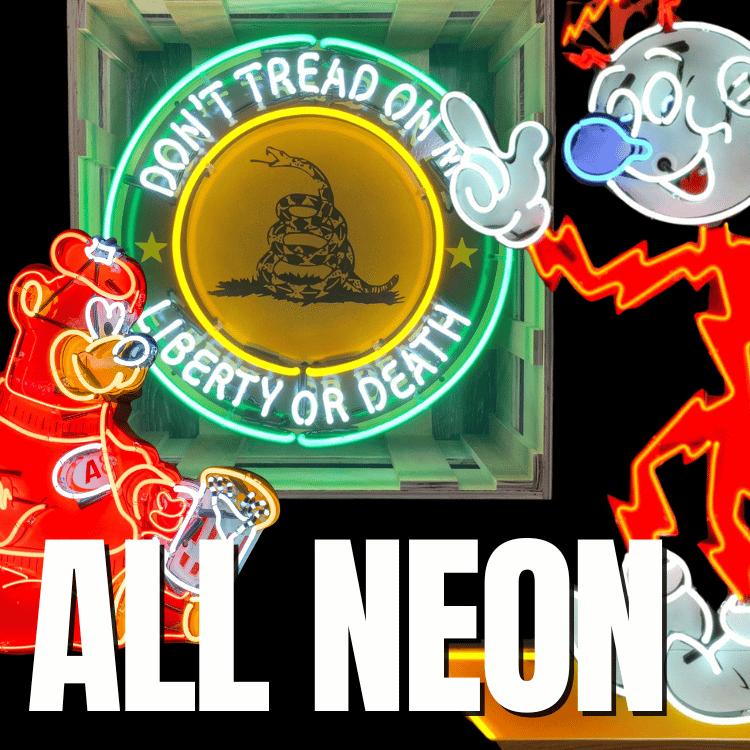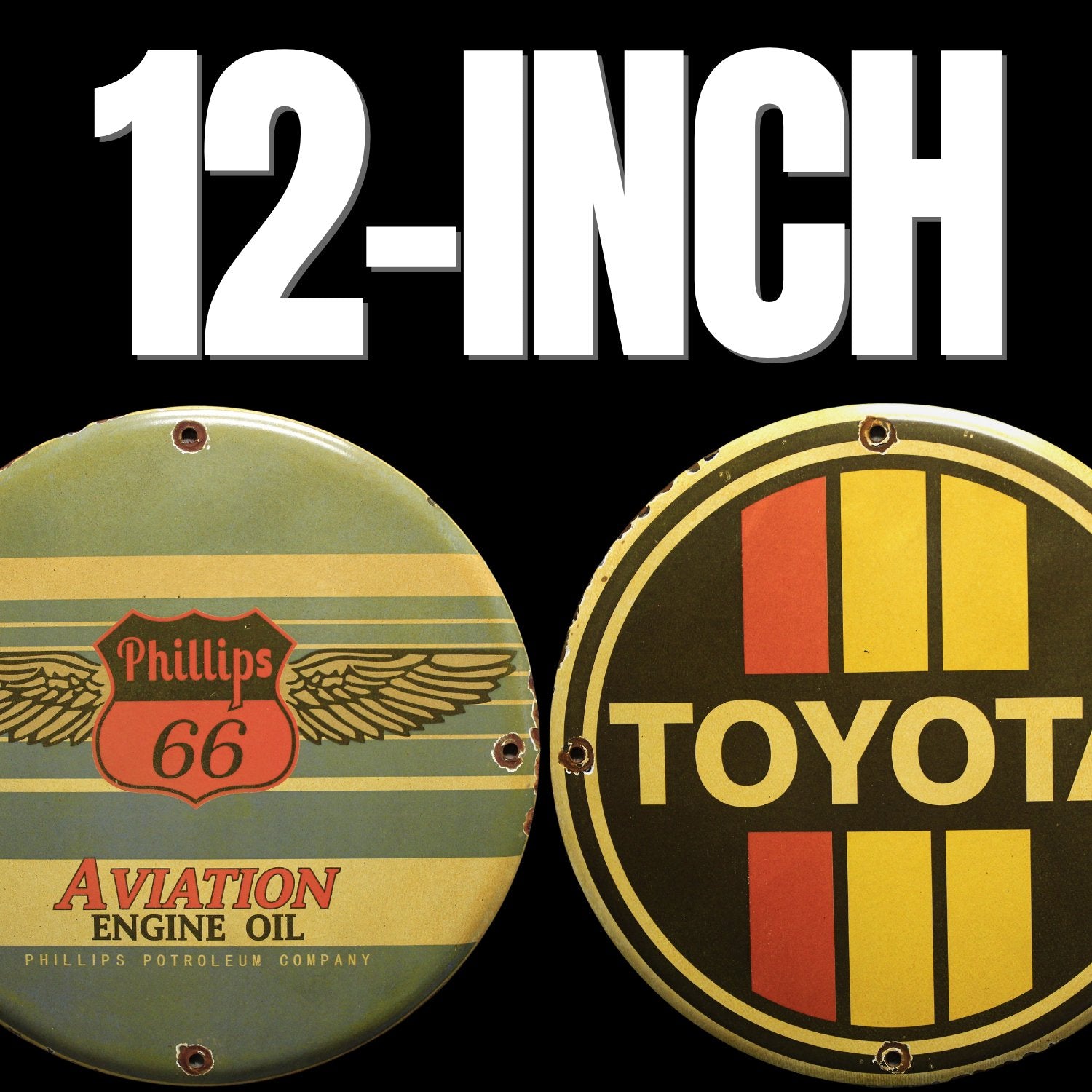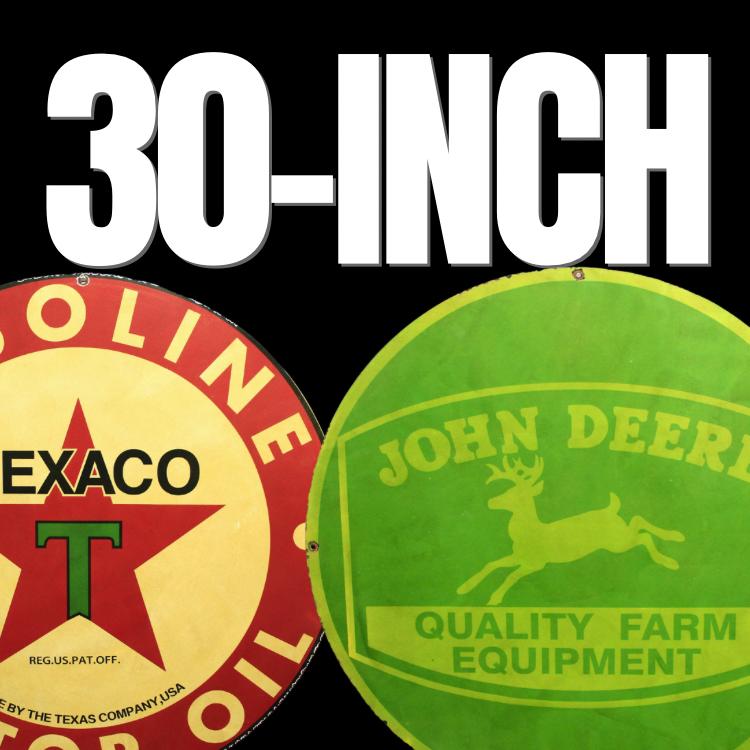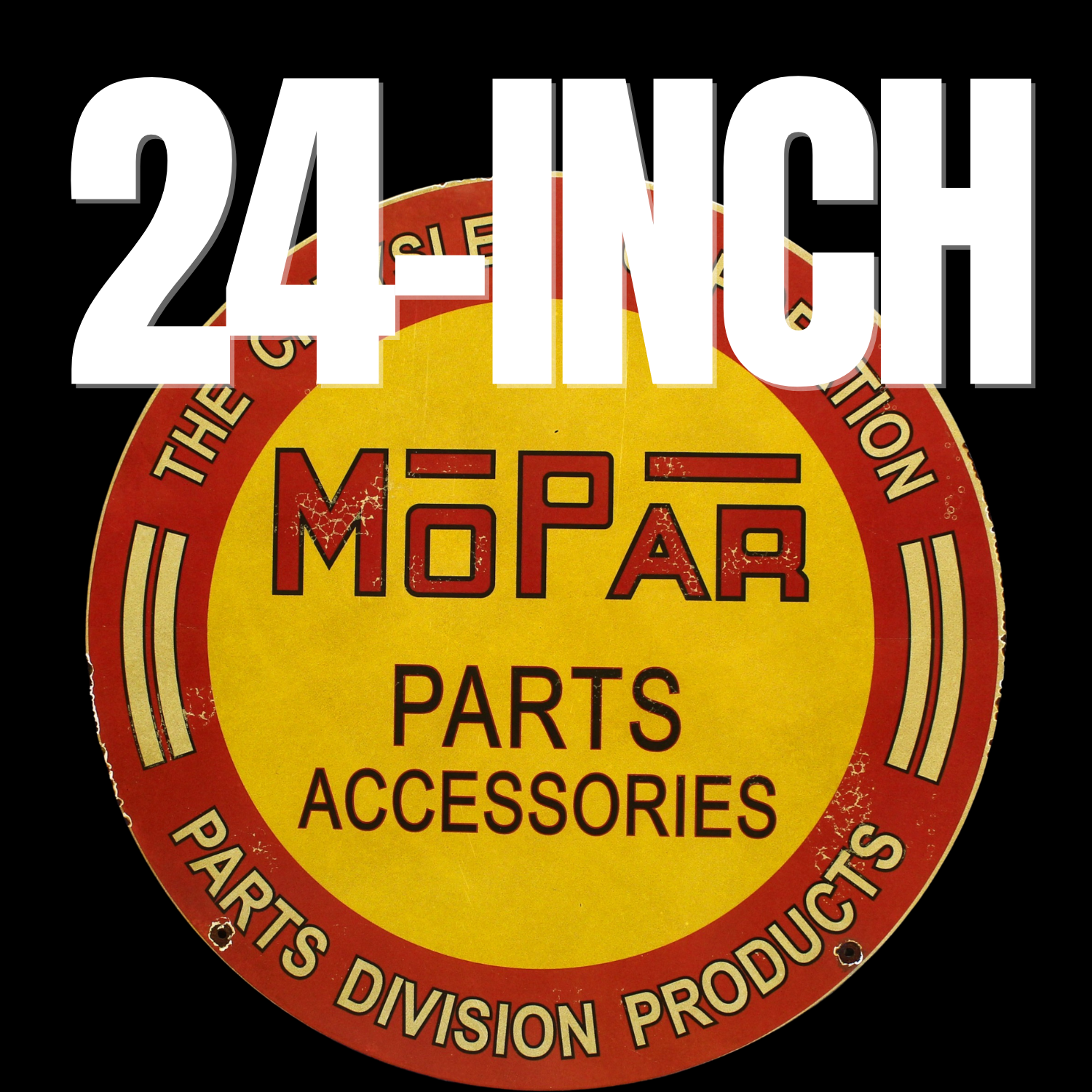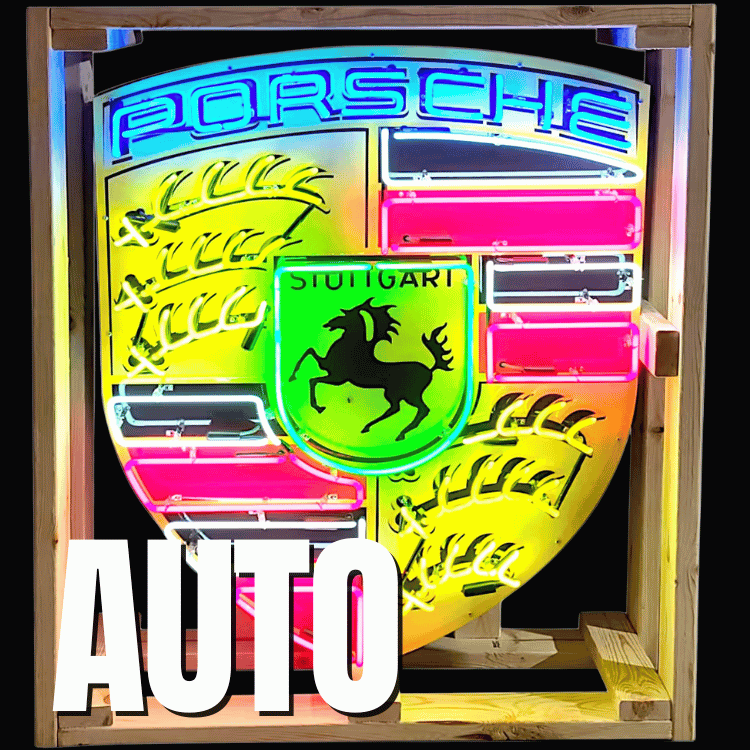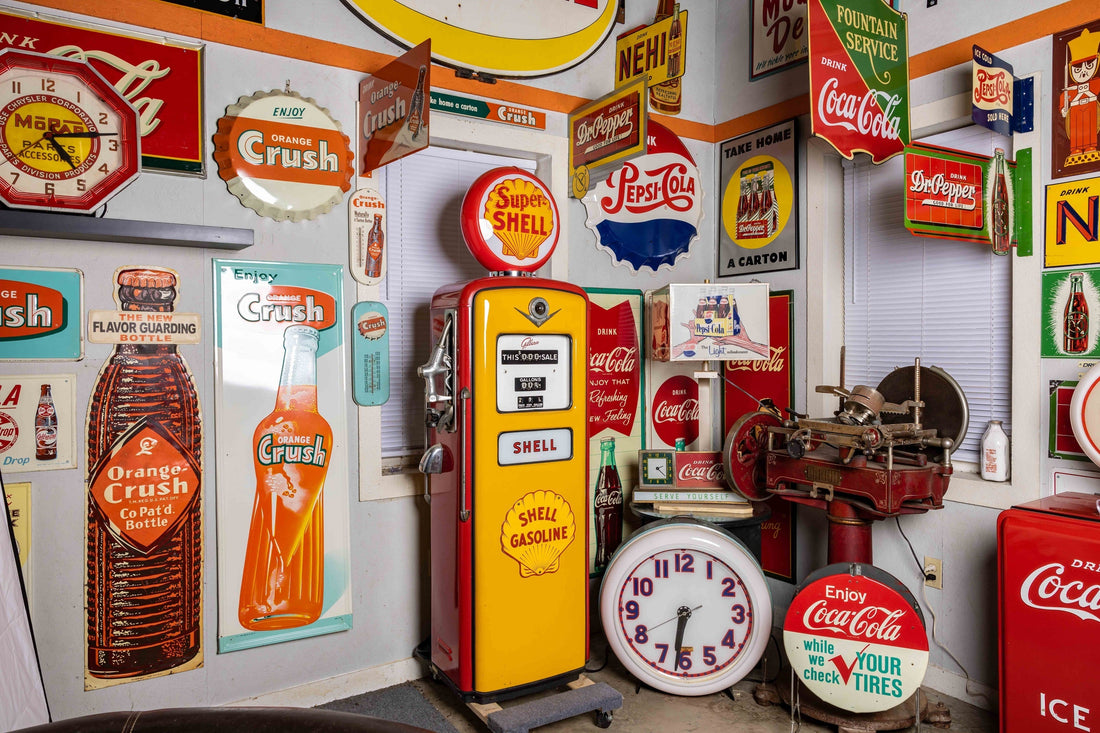
The Reproduction Problem No One Talks About—Until Now
The Reproduction Problem No One Talks About
Let’s address the elephant in the room—most “reproductions” out there are garbage.
Flimsy, lightweight aluminum. Pixelated sticker graphics. Glossy finishes that try to fake age with printed rust or digital distressing. They might look decent online, but they feel all wrong in your hands. No weight. No texture. No character.
And yet, these signs are everywhere. The market’s flooded with them. Cheap to make, easy to sell, and usually backed by a stream of fake reviews and airbrushed photos. For people who’ve never seen or held a real porcelain sign, it’s easy to think they’re close enough. But they’re not.
Collectors who’ve been around the block know the difference immediately.
There’s a certain feel to the real thing— the weight of the steel, the minor imperfections that show a human's touch, the porcelain-like feel of enamel baked and fused to steel. That’s not something you can fake with a sticker and a clear coat.
But here’s the problem: the gap between quality and convenience has never been wider.
Original porcelain signs are getting harder to find, and the good ones come with five-figure price tags, rust, and a healthy amount of guesswork. So the average buyer is left choosing between a $7,000 original porcelain sign or a $40 acrylic fake. Don't even get me started on vintage neon signs and modern reproductions.
It didn’t used to be this way. There was a time when signs were made to last. When quality wasn’t a luxury—it was the default. That standard has been lost in most of today’s reproduction market. Not because it has to be, but because it’s cheaper and faster to cut corners.
Most companies today are in the business of mimicking the look of vintage signs. That’s where the buck stops. The craft, the materials, and the process? Gone.
But there’s a difference between something that looks right and something that feels right. And anyone who’s ever held a real porcelain sign knows it.


